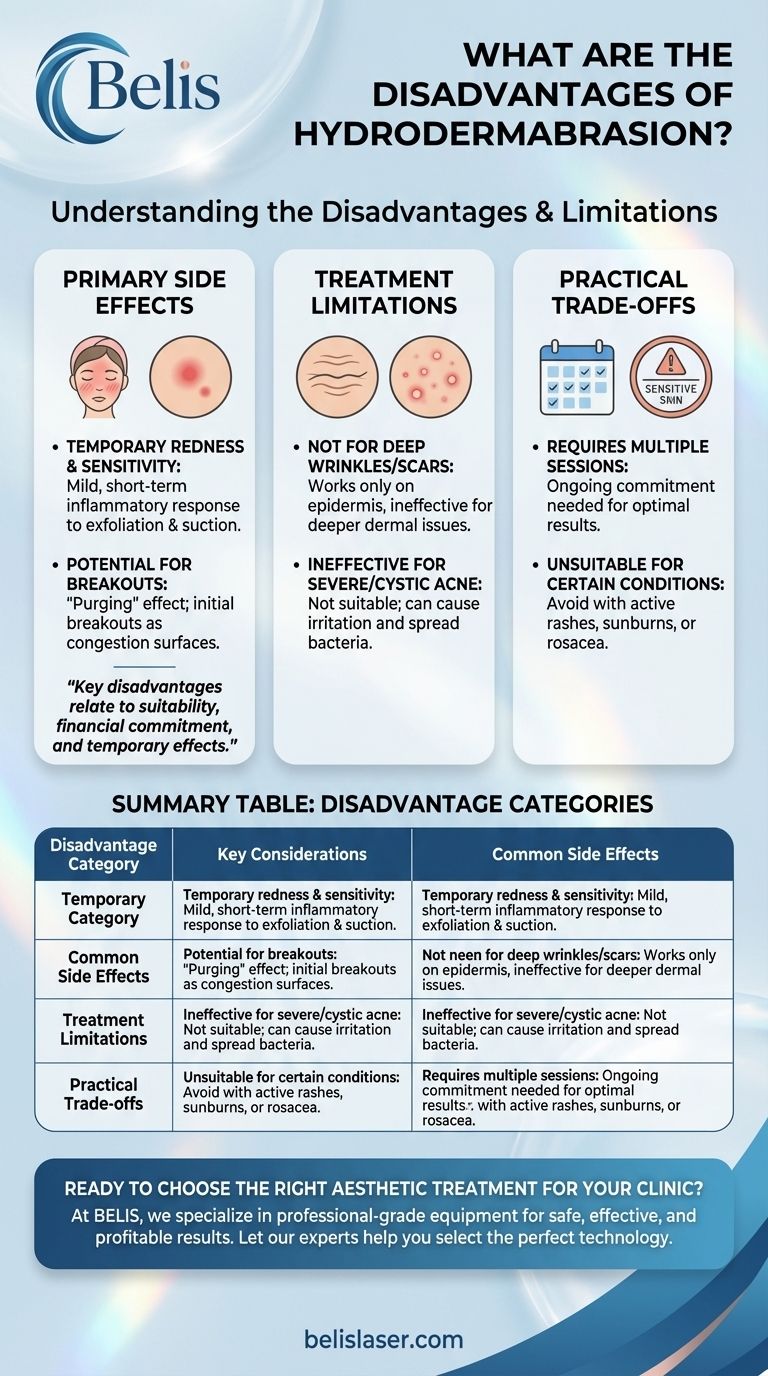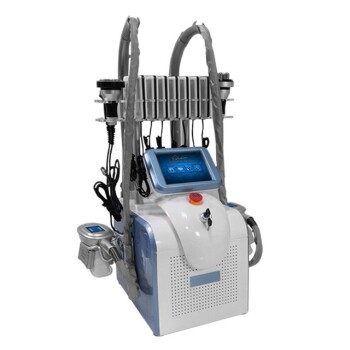The primary disadvantages of hydrodermabrasion are its temporary side effects, such as redness and sensitivity, and its limitations in treating deep-seated skin concerns. While the procedure is gentler than traditional microdermabrasion, the combination of exfoliation and suction can still cause mild, short-term irritation for many skin types.
Hydrodermabrasion is an exceptionally safe procedure, but its drawbacks are less about risk and more about managing expectations. The key disadvantages relate to its suitability for your specific skin goals, the financial commitment required, and temporary post-treatment effects.

Understanding the Primary Side Effects
While often marketed as having no downtime, hydrodermabrasion can produce minor, temporary reactions as the skin responds to the treatment.
Temporary Redness and Sensitivity
The most common side effect is mild redness immediately following the procedure. This is a normal inflammatory response to the exfoliation and vacuum suction used to clear out pores.
This redness typically subsides within a few hours and is a sign of increased circulation to the area, not damage.
Potential for Breakouts
For individuals with congested skin, the treatment can sometimes lead to initial breakouts. This process, often called "purging," occurs as the deep-cleaning action pushes underlying congestion to the surface.
These breakouts are usually temporary and resolve quickly as the skin clears.
The Limitations of the Treatment
A significant "disadvantage" of hydrodermabrasion is what it cannot do. Understanding its limitations is crucial for determining if it's the right choice for your cosmetic goals.
Not a Solution for Deep Wrinkles or Scars
Hydrodermabrasion works on the epidermis, the outermost layer of the skin. It is highly effective for improving skin tone, surface texture, and clogged pores.
However, it cannot correct deep wrinkles, significant acne scarring, or other issues rooted in the deeper dermal layers of the skin. More intensive treatments are required for those concerns.
Ineffective for Severe or Cystic Acne
While the treatment is excellent for mild acne and blackheads, it is not suitable for severe or active cystic acne. Treating inflamed breakouts can cause further irritation and potentially spread bacteria.
Understanding the Trade-offs
Beyond the physical effects, the practical considerations of cost and consistency are important factors to weigh.
The Need for Multiple Sessions
Hydrodermabrasion is not a one-time fix. To achieve and maintain optimal results, a series of treatments is typically required, often spaced a few weeks apart.
This means you must be prepared for an ongoing commitment rather than a single procedure.
Unsuitability for Certain Skin Conditions
The treatment is not recommended for everyone. Individuals with active rashes, sunburns, or moderate to severe rosacea should avoid it, as the exfoliation and suction can exacerbate these conditions.
Always disclose your full skin history to your practitioner to ensure the treatment is safe for you.
Making the Right Choice for Your Goal
To decide if hydrodermabrasion is appropriate, you must align the treatment's capabilities with your desired outcome.
- If your primary focus is a brighter complexion and clearer pores: Hydrodermabrasion is an excellent and low-risk choice for achieving a surface-level glow.
- If your primary focus is treating deep acne scars or significant wrinkles: You should consult a professional about more intensive options like laser resurfacing or microneedling.
- If your primary focus is managing sensitive skin or rosacea: You must seek a dermatologist's approval before proceeding, as the treatment could cause a flare-up.
Ultimately, understanding these potential disadvantages empowers you to make an informed decision based on your unique skin needs.
Summary Table:
| Disadvantage Category | Key Considerations |
|---|---|
| Common Side Effects | Temporary redness, sensitivity, and potential for initial breakouts (purging). |
| Treatment Limitations | Not effective for deep wrinkles, scars, or severe/cystic acne. |
| Practical Trade-offs | Requires a series of sessions for best results; not suitable for all skin conditions (e.g., rosacea). |
Ready to choose the right aesthetic treatment for your clinic or salon?
Understanding the pros and cons of each procedure is key to client satisfaction and business growth. At BELIS, we specialize in providing medical aesthetic clinics and premium beauty salons with professional-grade equipment that delivers safe, effective, and profitable results.
Let our experts help you select the perfect technology for your service offerings. Contact BELIS today to discuss your needs and elevate your treatment portfolio.
Visual Guide

Related Products
- Hydrofacial Machine with Facial Skin Analyzer and Skin Tester
- Hydrafacial Machine with Facial Skin Analyzer Skin Tester
- 7D 12D 4D HIFU Machine Device
- 12D HIFU Machine Device for Facial HIFU Treatment
- 9D 7D HIFU Vaginal RF Lifting Treatment
People Also Ask
- How does HIFU tighten the skin? The Science Behind Non-Surgical Lifting
- What is the best frequency for HIFU treatment? Achieve Lasting Lifting & Tightening Results
- How long does it take for HIFU to start working? See Full Results in 2-3 Months
- Is HIFU skin tightening safe? Ensure Your Safety with a Qualified Professional
- What does a HydraFacial machine do? Achieve Radiant Skin with No Downtime



















